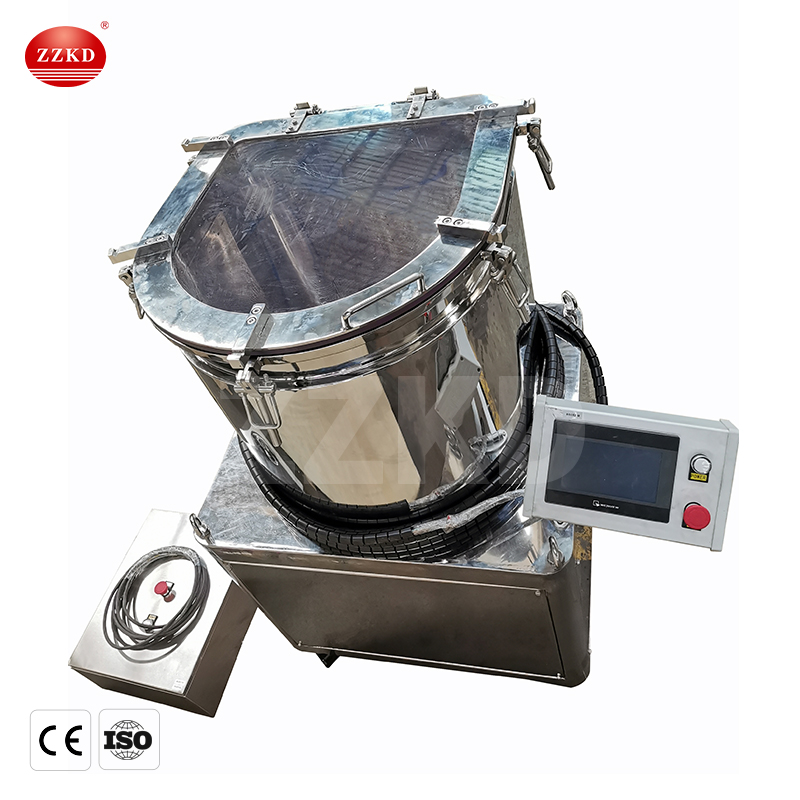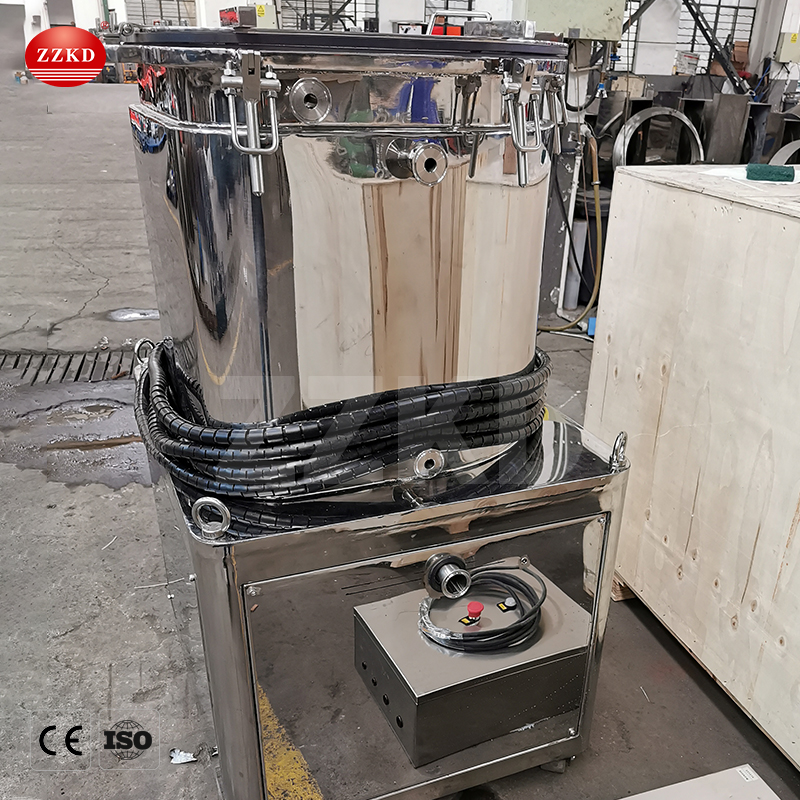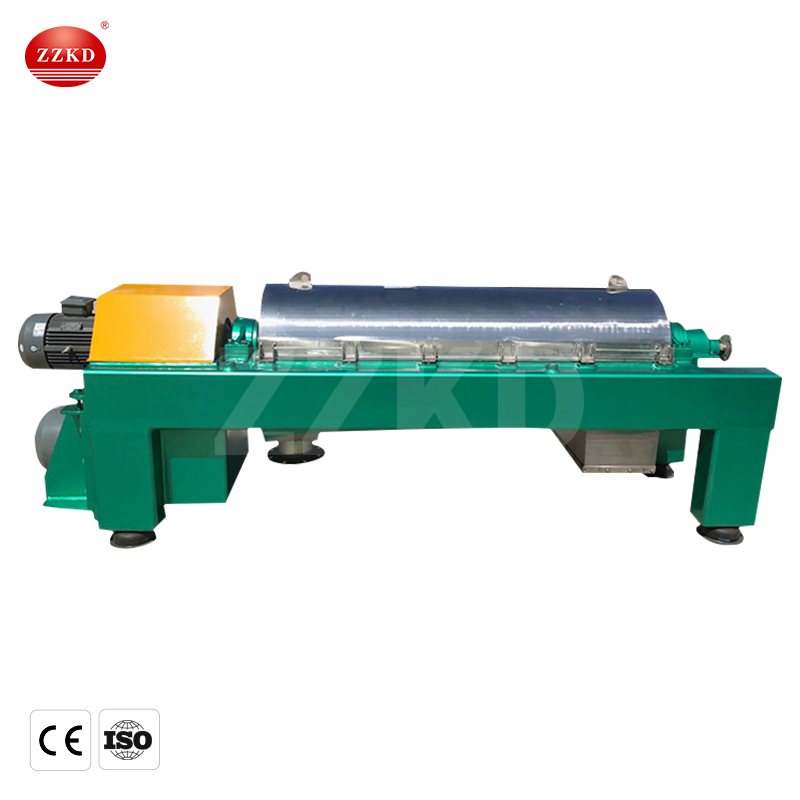Industrial Centrifuge Machine Manufacturer
Keda Machinery Equipment Co., Ltd. is a professional R&D and production of industrial centrifuges. We are a manufacturer of industrial centrifuges. The centrifuges currently on sale include: decanter centrifuges, stainless steel centrifuge, disc centrifuges, tubular centrifuges, shape separator. Let's introduce the industrial centrifuge:
An industrial centrifuge is a machine that mainly performs solid-liquid or liquid-liquid separation under the action of centrifugal force. The rotor is the main part of the centrifuge, which is installed on the rotating vertical or horizontal shaft to realize the separation process under the action of centrifugal force. The separation factor is the main indicator of the performance of the centrifuge, the ratio of the centrifugal force to the gravitational force on the material, and the ratio of the centrifugal acceleration to the gravitational acceleration. There are many classifications:

1. According to the structure, it can be divided into: flat centrifuge, three-legged centrifuge, tubular centrifuge, disc centrifuge and decanter centrifuge.
2. According to the separation method, it can be divided into: sedimentation centrifuge and filter centrifuge.
3. According to the discharge method, it can be divided into: upper discharge centrifuge, lower discharge centrifuge and screw discharge centrifuge.
4. According to the production capacity, it can be divided into small centrifuges and large centrifuges.
5. According to the use, it can be divided into: biological centrifuges, pharmaceutical centrifuges, chemical centrifuges, food centrifuges, cytocentrifuges and other categories. In addition, there are many kinds of industrial centrifuges, such as: automatic centrifuges, continuous flow centrifuges, slagging centrifuges, slag removal centrifuges and two-stage drum centrifuges.
The working principle of industrial centrifuge has two kinds of centrifugal filtration and centrifugal sedimentation. Centrifugal filtration is to make the centrifugal pressure generated by the suspension under the centrifugal force field to act on the filter medium, so that the liquid passes through the filter medium to become filtrate, and the solid particles are trapped on the surface of the filter medium, thereby realizing liquid-solid separation; centrifugal sedimentation is the use of the principle of rapid sedimentation and stratification of different density components of a suspension (or emulsion) in a centrifugal force field to achieve liquid-solid (or liquid-liquid) separation.

The structure of industrial centrifuge is mainly composed of motor drive system, refrigeration system, mechanical system, rotor and system control. Let's take a look at how to choose an industrial centrifuge:
1. Classification of centrifuges:
There are many styles and models of centrifuges, which can be divided into analytical centrifuges and preparative centrifuges according to their uses; according to the rotation speed, they can be divided into: ordinary centrifuges (low speed): 80000r/min;
2. Classification by structure:
Generally, high-speed and low-speed centrifuges can be divided into desktop centrifuges, high-speed refrigerated centrifuges, large-capacity low-speed refrigerated centrifuges, low-speed refrigerated centrifuges, desktop high-speed refrigerated centrifuges, and desktop low-speed automatic balancing centrifuges according to their structure and functions. According to volume and capacity, it can be generally divided into: floor-standing centrifuges, table-top centrifuges and mini (handheld) centrifuges. The floor-standing type has a large processing capacity and a large volume, and the mini centrifuge has a small processing capacity and a small volume. Centrifuges with different capacities, different rotational speeds, and different temperature controls can be selected according to the experimental purpose and experimental needs.
3. Selection of centrifuge tubes and centrifuge bottles:
Centrifuge tubes are mainly made of glass, plastic, and stainless steel. The common material of plastic centrifuge tubes is polypropylene (PP), and PP tubes have better performance. The advantages of plastic centrifuge tubes are that they are transparent (or translucent), have low hardness, and can be used to remove gradients by puncture. Plastic centrifuge tubes have caps. Before centrifugation, the caps must be tightly closed and inverted to prevent leakage. The tube cover has three functions: ① Prevent the sample from leaking out. This is especially important when working with radioactive or highly corrosive samples. ②Prevent sample volatilization. (3) Support the centrifuge tube so that it does not deform. When using glass tubes, the centrifugal force should not be too large, and a rubber pad should be used to prevent the tubes from breaking. Glass tubes are generally not used in high speed centrifuges.

4. Control system:
The centrifuges all use microcomputer control systems, which can not only ensure the safe operation of the centrifuges but also automatically complete the work tasks. Now many centrifuges have better humanized control systems.Examples: Rotor detection features, safety lock features, fast fault actions, acceleration and deceleration curves, etc.
The current centrifuges are all brushless motors, and some motors also have a braking function. Refrigerant centrifuges also vary from refrigerator to refrigerator. Now, of course, the environmentally friendly technology is fluorine-free refrigeration. In addition, the noise problem should be considered, and a centrifuge with less noise should be selected as much as possible, so as to maintain a comfortable experimental environment.
Industrial centrifuges are mainly used for large-scale centrifugal technology in chemical, pharmaceutical, textile, and food industries. The question of min. Its sample processing capacity is large, and the equipment is produced by the chemical machinery manufacturing department. Compared with laboratory centrifuges, industrial centrifuges are slightly clumsy and rough. The laboratory centrifuge is mainly used for centrifugation technology in laboratory research such as biology, medicine, chemistry, agriculture, food and pharmaceuticals. It can be used to separate and purify samples and analyze the performance of purified samples. The rotation speed of this type of centrifuge ranges from thousands of revolutions per minute to tens of thousands of revolutions per minute. However, due to the different requirements for the separation of experimental samples, the centrifugal equipment and centrifugal methods used are also different, and the continuous development of modern biology, medicine and high technology has formed a relatively complete and systematic independent experimental centrifugal technology Subject. Of course, with the needs of modern science and technology, the requirements of experiments on centrifuges are getting higher and higher, and the varieties are more and more finely divided. But their quality remains the same.


